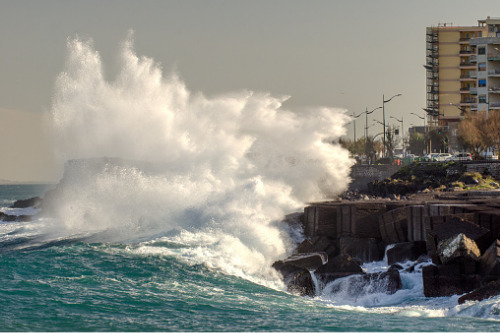

The Earthquake Commission (EQC) is urging New Zealanders to educate themselves on the tsunami risks and hazards in their area, and to actively make risk management and evacuation plans - particularly if they live or work in a higher risk area of the country.
The EQC provides home and land insurance for residential homes struck by natural disasters, including earthquakes, land slips, volcanic eruptions and tsunamis, and it also invests significantly into research on risk management and recovery. Sarah-Jayne McCurrach, part of EQC’s resilience and research team said that tsunamis can have a ‘devastating’ impact on homes and communities, and urged New Zealanders living near the coast to increase their awareness of the risks they may face.
New Zealand’s last tsunami scare happened in March 2021, when three major earthquakes of magnitude 7 and higher hit near the country. The quakes caused wave surges to strike the New Zealand coastline, and triggered a national tsunami advisory and evacuations of residents to higher ground.
McCurrach noted that New Zealand has a strong tsunami detection system, meaning there is usually a decent warning period before one strikes - so there is a lot that residents can do to prepare. The EQC released information on New Zealand’s risk on World Tsunami Awareness day, and encouraged residents to assess their own risks and preparation strategies.
“In recent years, we’ve seen the devastating impact that a tsunami can have in countries such as Indonesia, Samoa and Japan, and like these countries, New Zealand is also at risk of a tsunami,” McCurrach said. “World Tsunami Awareness day is a time for us to understand our tsunami hazards and risks, and to take time to get prepared.”
“Tsunami preparedness will affect communities that live and work along the coast,” she added. “EQC, along with some other key agencies, are working to promote tsunami risk management in New Zealand. One of the things we’re doing is working with regional councils to help better understand how far inland a tsunami might travel, and this means they’ll be able to better prepare their evacuation routes - but most importantly, make better and smarter land use decisions for our building and our infrastructure, so that we don’t continue to put people at high risk.
“New Zealand and the south west Pacific countries and communities now have the second largest tsunami monitoring and detection network in the world. This means that we can confirm if a tsunami has been generated or not, and inform them about it much quicker.”
McCurrach said that New Zealand has made some great strides in tsunami warning systems and preparedness over the past several years, but noted that there are still improvements to be made.
New Zealand has deployed 12-deep ocean assessment and reporting of tsunami (DART) buoys to strategic points around the country, which give some warning to allow evacuations to happen as soon as possible - however, she said that it is also important for residents to know what to do if they feel a strong or long earthquake.
“We are continuing to invest in science and research to help us better understand our tsunami hazards and risks, and in time, we hope to develop a national tsunami risk model that will help us be able to assess the impact in certain locations around the country,” McCurrach explained.
“It will take the different sources into account, whether it’s generated far away, nearer to us, or quite locally in New Zealand. This will allow us to formulate a much more refined risk management and reduction plan.”
“We know that New Zealand has experience significant land inundation tsunamis in the past,” she concluded. “Our historical records and investigations have told us this, so we encourage everyone to visit local and regional councils, and see if you live or work in a tsunami evacuation zone. If you do, make a plan with friends, whānau and colleagues so that if you feel a strong earthquake, you get gone.
“Communities need to understand their risk, and plan to prepare for it. We’ve done some fantastic work already in Aotearoa New Zealand, but there’s always more to do.”
